#dutch royal jewels
Note
Hello!🌹
do royals always wear tiaras at state visits? which tiara do you think máxima will wear? 🥰
Hi! How are You? During a State Visit, Máxima almost always wears a tiara during the banquet and more for this special occasion! I can't wait to see her! I'd like to see her tonight wearing the Stuart with the big diamond, but I think she might go for the Sapphire Tiara. 👑
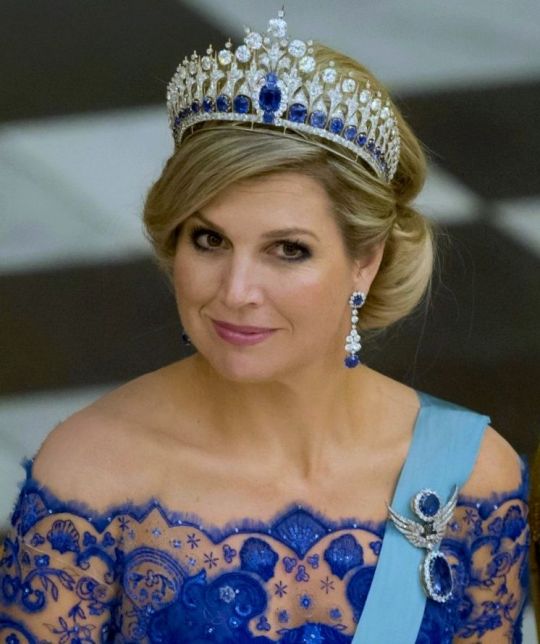
46 notes
·
View notes
Photo

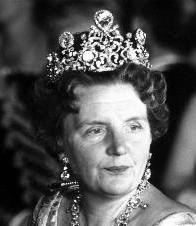



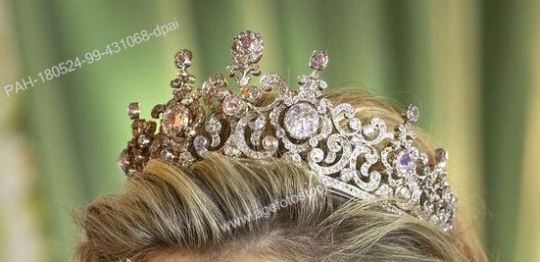
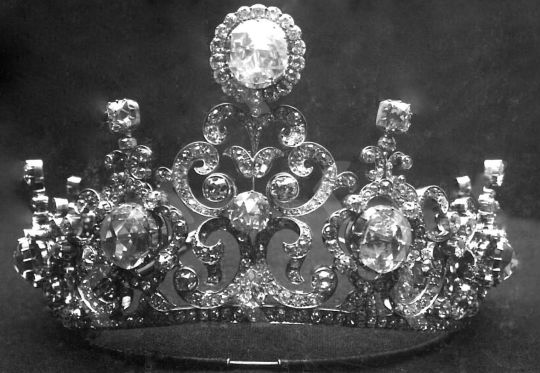

✣ ✣ My Jewelry Box of Favorites ✣ ✣
f you could gather together a collection of 24 tiaras, each with a different characteristic (no duplicates), from aristocratic and royal collections, what would you choose?
1. Big Gun: the Dutch Stuart Tiara
42 notes
·
View notes
Text

TIARA ALERT: Queen Maxima of the Netherlands wore Queen Wilhelmina's Stuart Tiara for the banquet during the state visit from Spain at the Royal Palace in Amsterdam on 17 April 2024.
#Tiara Alert#Queen Maxima#Netherlands#Dutch Royal Family#tiara#diadem#royal jewels#royaltyedit#tiaras#diadems#diamond
154 notes
·
View notes
Text

Emerald Earrings ♕ Queen Maxima
48 notes
·
View notes
Text

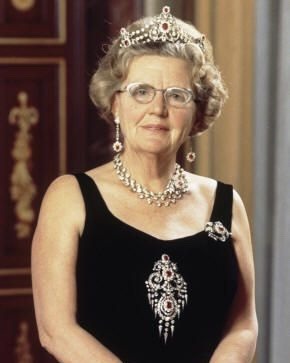
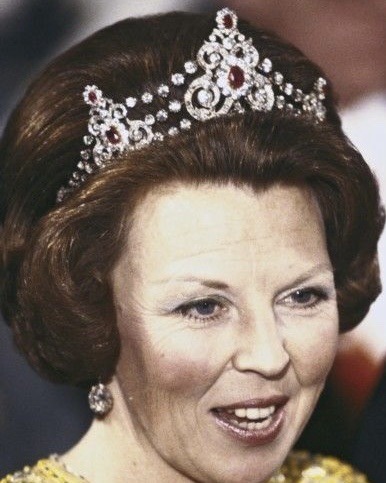

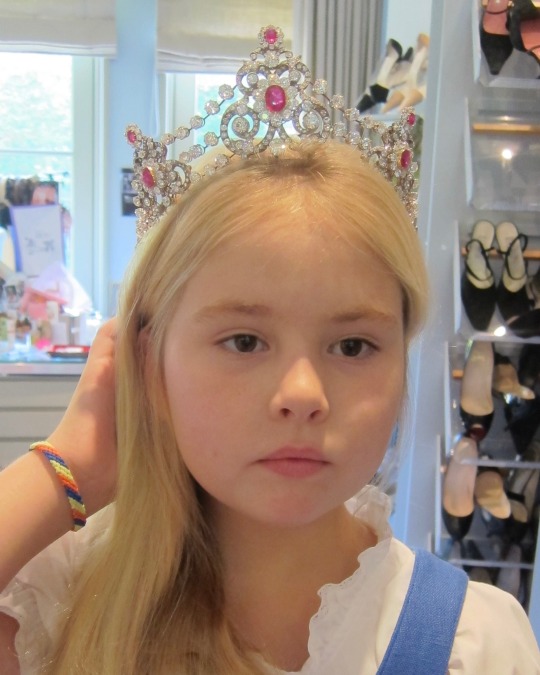
Royal Tiara Highlights: The Dutch Mellerio Ruby Parure
This set was made for Queen Emma of the Netherlands by Mellerio dits Meller around 1888. It has since been worn by every Dutch Queen since Emma and by a number of Dutch princesses.
#tiaras highlights#durf#dutch royal family#queen beatrix#queen maxima#princess catharina amalia#royal jewelry#royal jewels#royal tiaras
71 notes
·
View notes
Text
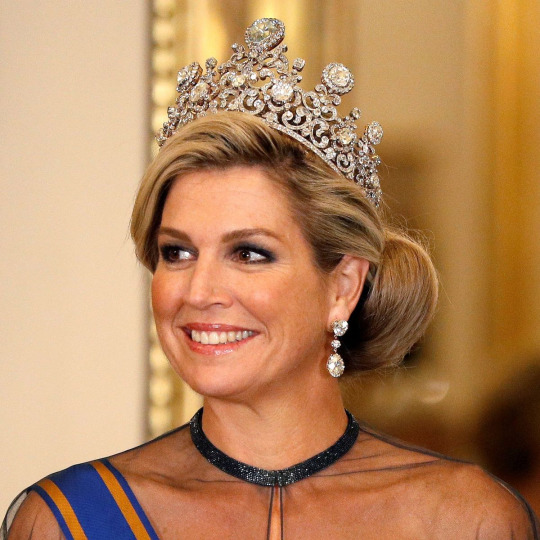
DAY 7 - Favourite Dutch tiara
The Stuart Tiara
The Stuart Tiara is the grandest in the Dutch jewel vaults and features the biggest stone in the collection: the Stuart Diamond, a pale blue diamond that was purchased in 1690 by William III, the Prince of Orange who became King of Great Britain, and his wife, Mary II. It takes its name from Mary’s royal house, the House of Stuart.
49 notes
·
View notes
Text

On this day:
DIAMOND OF DOOM
On December 14, 1967, Evalyn McLean, who never gained possession of the Hope Diamond bequeathed to her, nevertheless seemed to have acquired its curse, for she unexplainably died. Her grandmother had purchased the gem in 1911 and lived a life of tragedy: an automobile mishap killed her young son, her daughter committed suicide, and her husband was unfaithful and mentally unstable. She died in 1947, willing the diamond to her grandchildren, but her jewels were sold to pay off her debts.
The Hope Diamond was rumored to have begun as a 112-carat gem pried from the third eye of an Indian deity and brought to France in the mid-1600s by merchant traveler Jean-Baptiste Travernier. Over the years it possessed and was possessed by the French royal family, who were victims of intrigue, embezzlement, and executions; and Cadet Guillot, a thief who stole the diamond during the French Revolution, smuggled it to England, and was imprisoned. The diamond then disappeared until just after the statute of limitations on its theft had expired.
In 1812 diamond merchant Daniel Eliason sold it to Philip Hope, Dutch heir to a banking fortune. The diamond bred bitterness and bedlam in the Hope family for two generations before being sold to pay off debt to Simon Frankel, a New York jeweller. Other rumored owners of the Hope Diamond include:
* King George IV of Britain;
* Simon Montharides, who died with his family when his horse spooked and overturned their carriage;
* A Turkish sultan, who stabbed his wife and was overthrown;
* Two unnamed murdered owners;
* Jacques Celot, a French broker who went insane and killed himself;
* A Russian prince, Ivan Kanitovski, who gave the diamond to his mistress, an actress who was shot onstage while wearing it; Kanitovski himself was later murdered.
Finally, in 1911, Pierre Cartier who sold it to Evalyn Walsh McLean, who let her dog wear the diamond when she wasn't. The diamond’s final owner, Harry Winston, didn't believe in the curse. He mailed it in a brown paper bag as a donation to the Smithsonian Institution in 1958.
Text from: Almanac of the Infamous, the Incredible, and the Ignored by Juanita Rose Violins, published by Weiser Books, 2009
53 notes
·
View notes
Text
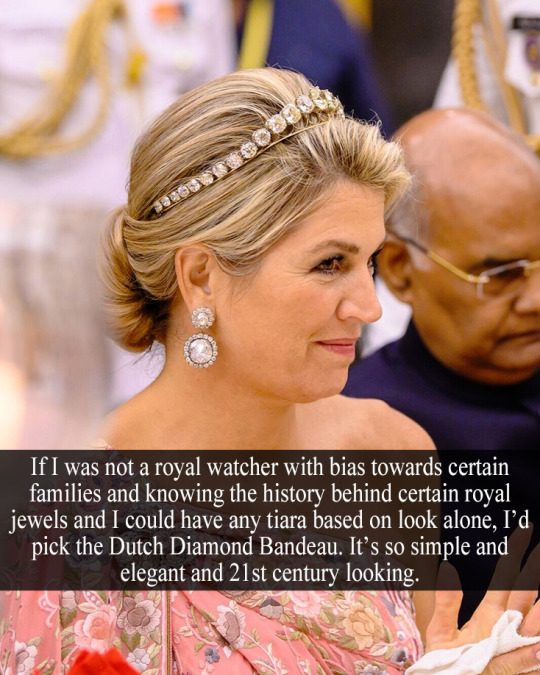
“If I was not a royal watcher with bias towards certain families and knowing the history behind certain royal jewels and I could have any tiara based on look alone, I’d pick the Dutch Diamond Bandeau. It’s so simple and elegant and 21st century looking.” - Submitted by Anonymous
26 notes
·
View notes
Note
I like the Dutch and Swedish royals. Great fashion and Jewels, all the while doing their duties:).
Yes!
28 notes
·
View notes
Text
Oz Rock bands were big in Brazil in the 1990s. Australian surfers know its breaks. [...] [I]n the past decade [2005-2015] Brazil has had the second fastest rate of migration to Australia [...].
Australia’s connection with Brazil began in 1787 with the First Fleet voyage. This was thanks to the port of Rio’s location in the South Atlantic and a centuries-long British-Portuguese alliance – unique among European powers in the Age of Empires. The First Fleet had three layovers on its relatively cautious eight month voyage from Britain: a week in the Spanish colony of Tenerife in the Canary Islands, a month at Rio in the Portuguese colony of Brazil and a month at the Dutch East India Company’s Cape colony in South Africa. Fleet commander Arthur Phillip had not intended to rest and resupply at Rio but sailing conditions made it prudent to do so. And Phillip’s former service in the Portuguese navy ensured a cordial welcome from Rio’s colonial authorities.
At this time, as Bruno Carvalho writes in Porous City: A Cultural History of Rio de Janeiro (2013), Rio enjoyed rising status within the Portuguese Empire. In 1763 it had been named the new capital of Brazil. In 1808 Portuguese royals fled to Rio to escape Napoleon and remained there at the end of the Napoleonic Wars in 1815. As a consequence, Rio could boast of being the only American city to serve as a centre of European power.
One First Fleet official lamented how little the British knew of Rio. This came to be addressed, as Luciana Martins notes in A Bay to be Dreamed Of: British Visions of Rio de Janeiro (2006), as increasing numbers of British visitors ventured there during the 19th century. Visitors included New South Wales Governor Lachlan Macquarie, and later Charles Darwin – along with thousands of convict and free migrants on board ships calling at the port of Rio.
Writing in Connected Worlds: History in Transnational Perspective (2005), Emma Christopher observed that in Australian history books, travel from Britain to Australia seemed to have been “covered as if in the blink of an eye”.
This inspired her to write of the “watery non-places” of the journey not as voids, but rather as places where much transnational history was lived [...].
[J]ournals by intending Australian colonists such as Macquarie’s wife Elizabeth allow glimpses of colonial Rio through colonial Australian eyes. Elizabeth Macquarie assessed Rio with keen intelligence and, more challengingly – as Jane McDermid has argued in recent research on histories of the British abroad – a callously casual racism.
First Fleet journals tell us that, in 1787, convicts confined to ship at Rio witnessed enslaved West Africans rowing Portuguese fruit sellers around the anchored Fleet transports in decoratively festooned boats.
Convicts overheard and exchanged stories from officials permitted shore leave: stories of the songs of captive West Africans awaiting sale at the port marketplace; of colourful Portuguese Catholic institutions and festivities that were exotic to straight-laced British Protestants. Stories of being forbidden, on pain of death, to venture to hinterland jewel mines. Onshore at Rio, colonial migrants bound for Australia befriended Portuguese colonists, despite the language barrier. They purchased curios. They passed judgement – glowing and harsh – on the people of the Portuguese colony, its natural and built environment, just as Brazilians in turn scrutinised them.
---
Text by: Julie McIntyre. “I Go to Rio: Australia’s forgotten history with Brazil.” The Conversation. 16 September 2015. [Bold emphasis and some paragraph breaks/contractions added by me.]
23 notes
·
View notes
Note
I think it’s so ridiculous if these rumors of no tiaras at the coronation are true. It’s a coronation, for gods sake. If they just make it another church service, do like the Scandinavians and get rid of the coronation. If you want a coronation, at least do like the Dutch and give us a tiara-clad dinner, and then a gown/hat day event.
The Kate might wear flowers story is straight up recycled from before her wedding. I fully remember the press saying that she was planning on flowers instead of a tiara. Thankfully, it turned out to be false. Hopefully that's the case this time around too.
If the ladies turn up in hats, I'll be livid lol. It's absurd that this is even a question right now. They want to give the appearance of a scaled back coronation when it is anything but. I was all for ditching the ermine robes for the peers and coronets (they are outdated) but tiaras and gowns to me are hardly an ostentatious display of wealth when your king and queen are literally adorned with multiple priceless crowns and jewels. Honestly, having Charles and Camilla all decked out while their guests wear regular clothes will have the opposite effect that they think it will. It will be a visual representation of the wealth gap. It's a coronation ffs. If you wear tiaras to state banquets and diplomatic dinners, you can bust them out for the most important of royal events.
8 notes
·
View notes
Text
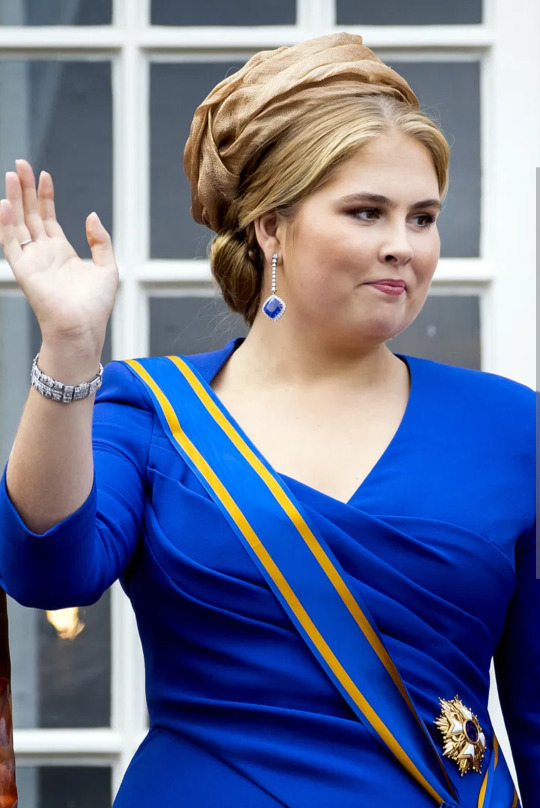
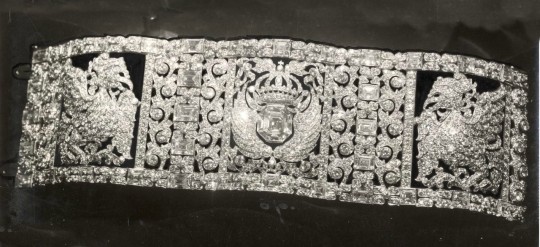

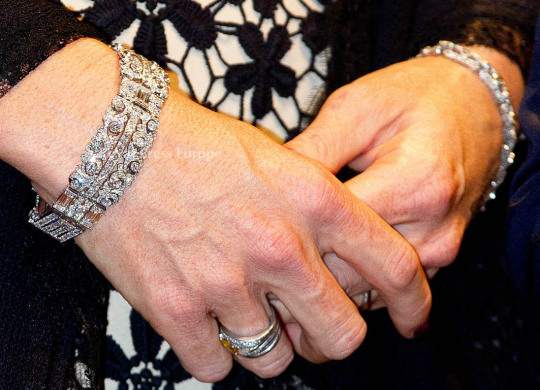
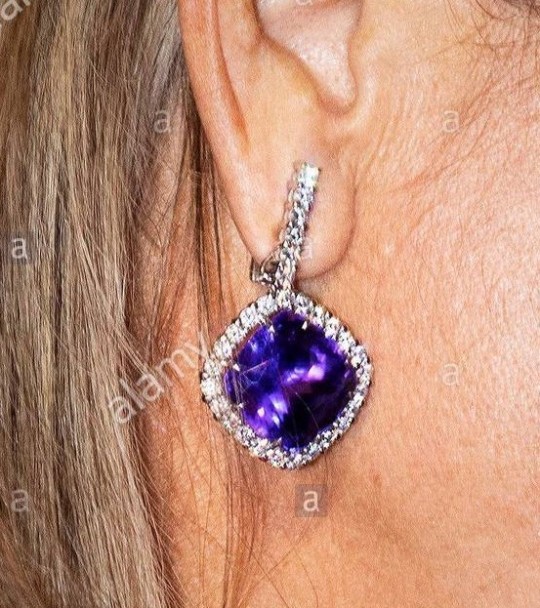
And this Máxima brooch on her back.

23 notes
·
View notes
Photo
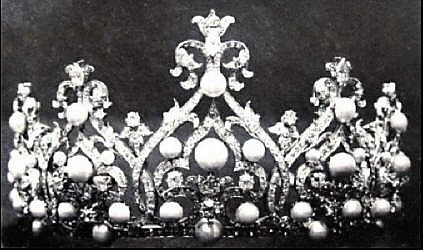
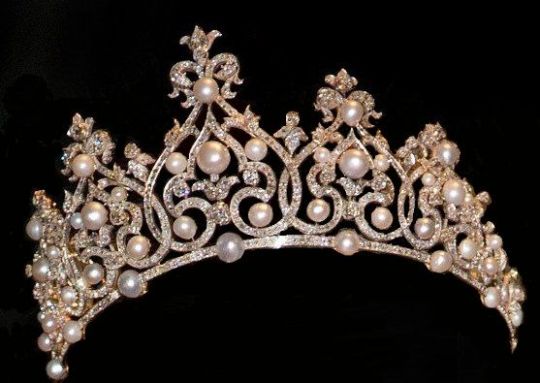
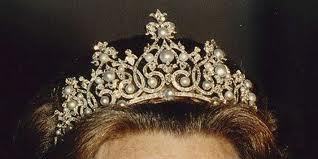
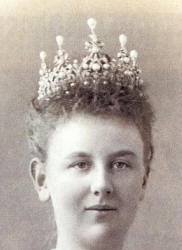


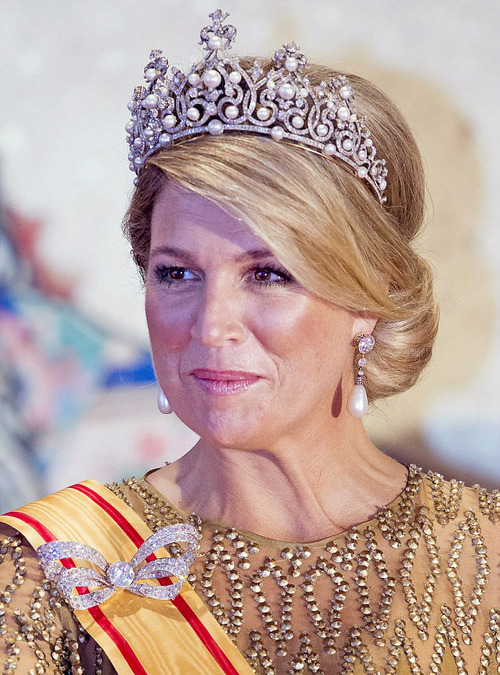

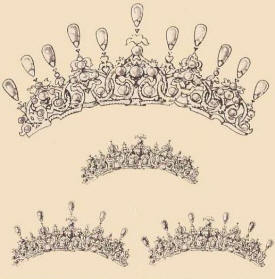
✣ My Jewelry Box of Favorites ✣
If you could gather together a collection of 24 tiaras, each with a different characteristic (no duplicates), from aristocratic and royal collections, what would you choose?
5. Pearl Tiara: Dutch Wurttemberg Ornate Pearl Tiara
20 notes
·
View notes
Text
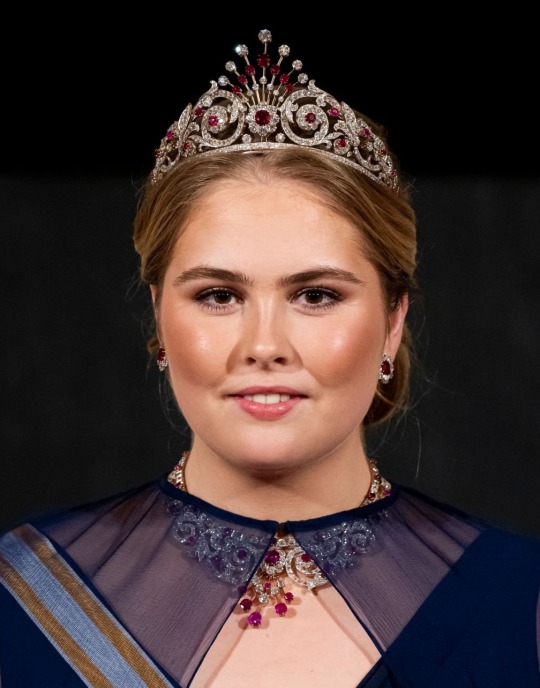
TIARA ALERT: Princess Catharina Amalia of the Netherlands, Princess of Orange, wore Queen Wilhelmina's Ruby Peacock Tiara for the banquet during the state visit from Spain at the Royal Palace in Amsterdam on 17 April 2024.
#Tiara Alert#Princess Catharina Amalia#Princess Amalia#Crown Princess Catharina Amalia#Princess of Orange#Netherlands#Dutch Royal Family#tiara#diadem#royal jewels#royaltyedit#tiaras#diadems#ruby
136 notes
·
View notes
Text
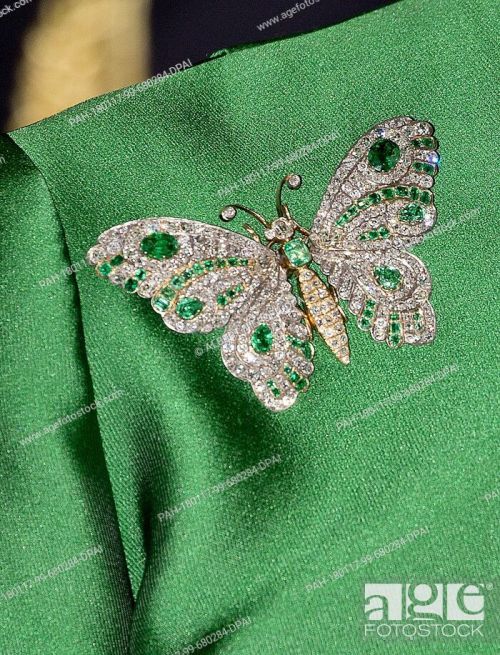
Emerald Butterfly Brooch ♕ Dutch Royal Jewel Foundation
43 notes
·
View notes
Text
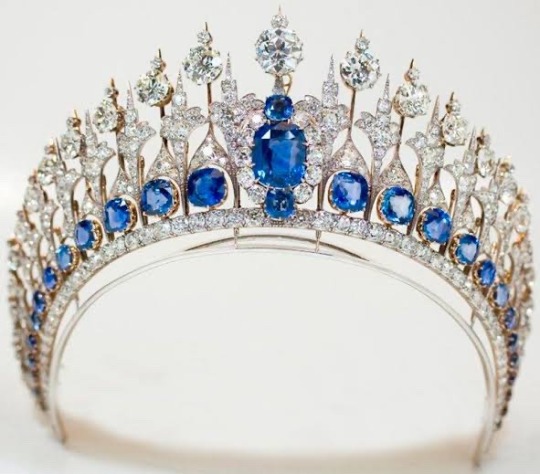




Royal Tiaras Highlights: The Dutch Sapphire Parure Tiara
This piece was made in 1881 by a Dutch firm, Maison van der Stichel, on a commision from King Willem III of the Netherlands as a gift for his wife, Queen Emma. Initially, it was set on a frame that allowed it to be broken into parts, including a haircomb and a brooch made out of the central sapphire element. However, in 1928, the Dutch court jeweler Van Kempen made alterations making it so that the piece was composed of one single golden frame, rather than small detachable ones.
More than six hundred diamonds are set in the piece and the sapphires are all Sri Lankan - including the grand central sapphire, which weighs in at around 44 carats. It’s believed that Queen Emma left the tiara to her granddaughter, Princess Juliana, who placed it in the family’s foundation.
In 2013, ahead of the inauguration of King Willem-Alexander, the base of the tiara was supplemented so that the piece now sits slightly higher on the wearer’s head. Queen Maxima wore the tiara for the first time in public at her husband’s inauguration, but on that occasion, she didn’t actually wear the complete piece. The tall central diamond plume of the tiara was removed for the event and replaced with a single round brilliant.
via The Court Jeweler
34 notes
·
View notes